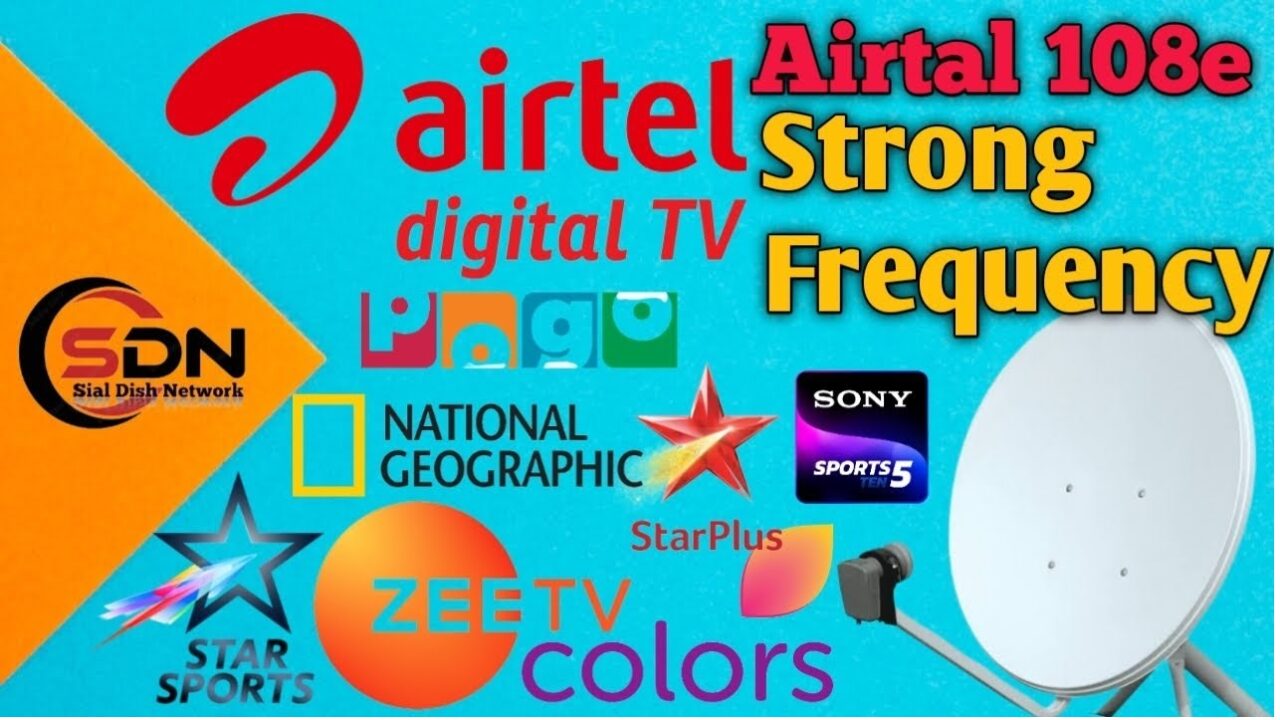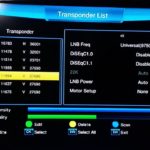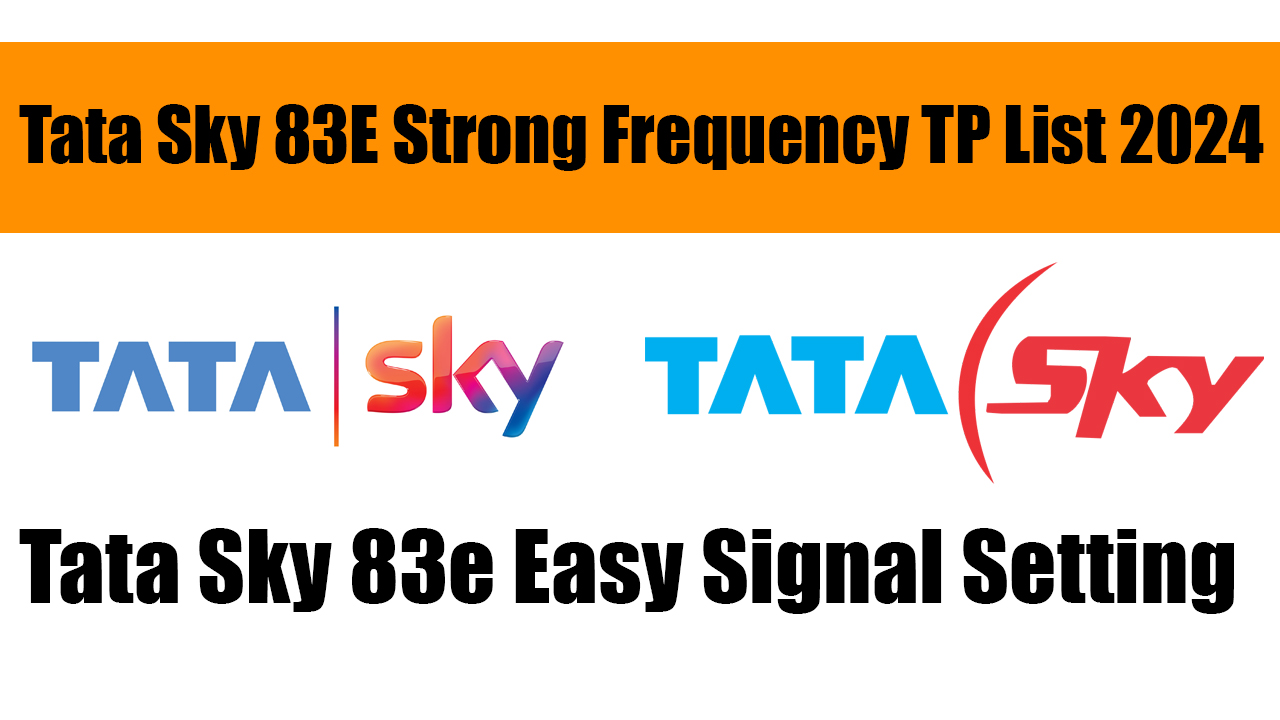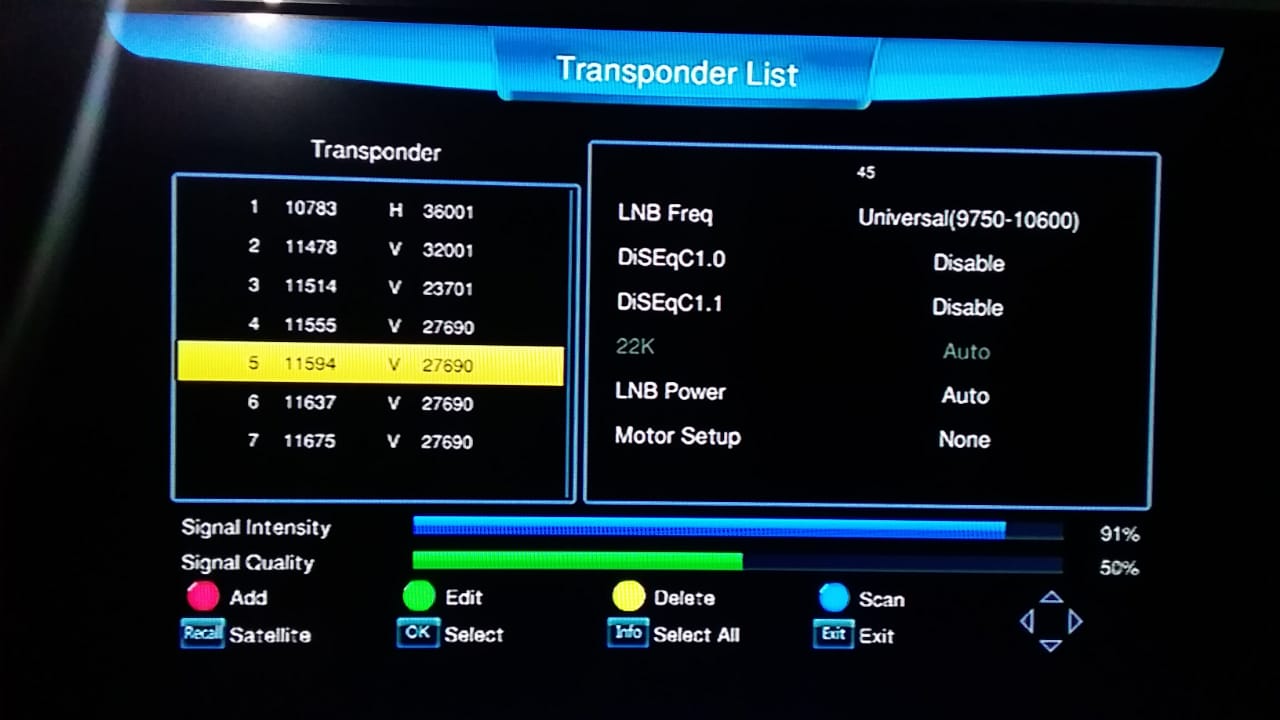Airtel Digital TV Channel List and Frequency TP Update for 2024
We all know that Satellite television is one of the fast-growing industries and channels change frequency on an irregular basis. Airtel Digital TV, part of India’s leading DTH service provider has revised its channel list with new frequency transponder details as we step into 2024. Some of the content appeal coupled with Information and Technical Specification to avoid inconvenience while you are watching Airtel channels simultaneously All In one Guide.
What is Airtel Digital TV
Bharti Airtel-owned DTH service provider, Airtel Digital TV was launched in 2008 and has grown to become one of the major operators providing services across various cities. Offering exceptional picture and sound quality, Airtel Digital TV provides hundreds of channels across all genres such as entertainment, sports, news, movies.and regional content. The service was curated keeping in mind the needs and choices of Indian audiences making sure there is something for every kind on content consumer.

Learn about transponder frequencies (TPs)
Frequencies of the transponders are core parts of satellite communication. They are in charge of transmitting and receiving satellite signals. In both television and radio broadcasts, signals are beamed up to a satellite in space where each transponder is configured to broadcast data across the range of frequencies assigned. To be specific, DTH and its subscribers of it who want to view channels must set these frequencies correctly
List of Airtel Digital TV Channels in 2024
Airtel Digital TV channel list 2024 offers channels from multiple genres and languages The channels that are on offer, broken down by category and including more detailed recaps.
Airtel Band Information
Airtel, formerly known as Bharti Airtel Limited might be a dominant force in the telecommunication world. Wikipedia Headquartered in New Dehli, India Airtel is one of the international video conferencing software companies offering services worldwide including Asia and Africa. Airtel has been a pioneer in the telecom space, employing advanced technologies to transform as required and deliver mobile voice & data services, fixed-line broadband, digital TV, and enterprise services. Indeed, all these services rely on a central ingredient – the radio frequency spectrum.
Understanding Frequency Bands
Telecommunications[edit] A frequency band is a range of frequencies containing many individual frequencies. Aesthetically, mobile networks are based on radio waves which operate in distinct bands. Different bands are earmarked for different types of communication, such as voice calling, texting and data services. Altogether, this frequency management and allocation are very crucial Continuous interaction between the devices and network needs to be maintained. Government bodies allocate these frequencies to telecom operators and try to ensure there is minimal interference between competing networks.
Why is Frequency Management Important?
Telecom Operators have so much dependency on frequency bands & its management is the key to success for any operator. Radio spectrum is a scarce resource, and it needs to be used wisely so that valuable services can exist. Airtel’s success at managing its frequency spectrum is the basis of network coverage, data speed, and being able to offer 4G VoLTE calls. Spectrum management is how governments award frequency bands for different uses, including new technologies and the growth in demand for mobile services. In a smartphone-rampant, mobile internet-hungry-crowd world keeping check with frequency bands is become all the more imperative for telecom operators (like Airtel).
Airtel’s Frequency Spectrum. Spectrum Bands Used by Airtel
It uses multiple frequency bands to deliver its services on different technologies viz. 2G and 3G in the GSM band while LTE is based on. Airtel has launched early adopter programs for more than half of Indian states, where customers can access Airtels high-speed data network under an initial zero-cost program offering fourth-generation (4G/FDD-LTE) technology here too. attribute only applies if you have a link pointing at page i The 2G, 3G and even the initial spectrum reserved for its overpriced LTE services are not providing habitats of top performance in data transfer. There are several bands, each chosen for reasons such as range, penetration, and data capacity.
Airtel 2G Network: The hope of Airtel’s GPRS is been solid on the 900 MHz plus typically upon he began in to the gap connected with One thousand eight hundred MHz areas. These frequencies are good for voice calls and basic data services (SMS, MMS). The lower frequencies provide a wider coverage footprint which can reach rural and remote areas perfectly.
3G Networks: Airtel uses a 2100 MHz band for its major chunk of services. This band enables higher data transmission than 2G and supports video calls, and mobile internet browsing. The introduction of the 3G network represented a broad step forward in mobile technology – at last more data-heavy applications started to become feasible.
Airtel 4G LTE Networks: Band3 (2600 MHz), and Band40(2300 MHz) These bands provide fast internet, therefore also catering to HD video streaming(like watching movies via Netflix), online games, etc. The selection of various bands allows Airtel to achieve optimum coverage and capacity, which enhances service delivery.
5G Networks: The company is readying its network for the 5G rollout and will be able to provide a punchy experience on new spectrum bands including 3. 5G: What 5G is, and what it means for you The next mobile standard promises super-fast data speeds plus the ability to connect lots of devices at once This will be crucial for things like AR, self-driving cars and smart cities.
Spectrum Acquisition & Management
Airtel acquires spectrum through government auctions and allotments. Every country has a regulatory body (like TRAI in India) that provides spectrum licenses to telecom operators. Airtel gets the right to use these frequency bands for a stipulated time as part of the airwaves licenses. The cost of acquiring spectrum licenses can be high and this has to be in balance with the potential revenue generated from differentiated service.
Airtel focuses on acquiring the right amount of bandwidth to be able to feed its expanding customer base as well as technology roadmaps. It spends billions on buying and upgrading spectrum licenses to stay competitive, too. Airtel not only buys spectrum but also works more to use the available spectrum in an optimal manner with its aggressive deployment of advanced technologies that help it offer a wider network reach.
Role of Regulatory Bodies
Government regulatory agencies are responsible for regulating and making decisions on how the radio frequencies will be used. They make sure that it is distributed evenly among the operators and ensure its national as well as international standard usage. Regulatory authorities further regulate, in addition to the case of spectrum auctions include setting out rules and conditions for license acquisition.
Spectrum is treated as a national asset in many countries, and its use is governed by regulations. Airtel needs to adhere to these and they typically cost a lot of money with a high degree of assurance, around quality of service, coverage, etc.
Mobile Technology and Frequency Bands
Mobile Technologies Supported. Advancements in technology and always-rising consumer demands have been the driving force behind the evolution of mobile networks from 2G to 5G. Frequency bands have been a key enabler for this evolution, and as each generation of mobile technology is introduced (1G through to 5G) the new capabilities are enabled using higher/Lower frequency bands ~11). 2G . Technology: 2G networks which as launched in the early nineties, were the first to offer digital voice calls and SMS service.. The most recent generation of 2G networks saw increased call quality and coverage but still operated with the same constraints as an analog-based system. Airtel operates its network in both the 900 MHz and 1800 MHz bands offering some relief by producing a wider footprint across distance (frequency) which allows it to carry more calls between antennas not possible using only one frequency band alone.
Since 3G Technology: The move towards data-oriented services became even more important with the arrival of 3-G networks. Utilizing the 2100 MHz band, as well as offering compatible access to internet, video calling, and multimedia messaging on a mobile network Thanks to 3G technology, Airtel could significantly expand its service portfolio and cope with the increasing data requests.
4G LTE: The launch of 4 G LTE made us have data at high speed on our mobile devices. The company noted that its deployment is capable of supporting Mehd serving thousands of people using high data applications such as streaming live TV or online gaming thanks to Airtel running 4G services on multiple frequencies concurrently. Simultaneous roll-out of new features (like VoLTE or Mobile broadband) was possible just because 4G networks are flexible.
5G Technology: 5G networks are beginning to be deployed, delivering ultra-high speeds and expanded connectivity with low latency across a diverse range of use cases for an entirely new level of broadband experience. Airtel trying to send new boundaries in the technology front A wake-up call for other operators In addition to its existing spectrum allocations, it also has 355 MHz of sub-GHz mmWave and additional mid-band / capacity (1.2 GHz) through the acquisition of a hefty outlay on capabilities -5.61 % that’s much needed as Umang Das said so eloquently recently! Emerging technologies like the Internet of Things, virtual reality, and autonomous vehicles will be supported by 5G networks.
Frequency Aspects from Engineer Angle
The characteristics of these frequency bands are paramount in defining how mobile networks will perform. All frequencies have different features which make its affect of receiving/sending signals and coverage/capacity.
Low-Frequency Bands: These bands below 1 GHz (e.g., 900 MHz) provide very good coverage and penetration. They can travel over long distances and through obstructions like buildings or trees, making them a good fit for both rural and urban regions. They can support data transmission, but with like a reduced capacity so they are much more convenient for voice services.
Mid-band: 1 GHz to 6GHz range, such as the1800 MHz and2100 Mhz bands provide a tradeoff between coverage (low band) and capacity (high frequencies). These bands offer balance between urban and rural coverage, along with higher data speeds than low-band frequencies. These bands are more typically used for 3G and 4G services.
High-frequency bands are those above 6 GHz, for example in the band of 3.5 GHz, with a great capacity to transmit data. These are the frequencies you want on a 5G network, delivering ultra-fast data rates and low latency. Nevertheless, high-frequency bands suffer from short range and obstacles easily obstruct them. Looking at these sites as the next best thing to rooftops, they are great workhorses for urban dense areas.
Airtel Generation Transition
The transition of Airtel from one generation to another indicates its level of innovation and satisfaction for the customers. The company has always been forward-looking in its adaptation of technology, from spectrum bands used to improve services.
2G to 3G Transition: In this transition, Airtel updated and upgraded its network infrastructure to be able to use different frequency bands. Airtel could offer data-centric services with the deployment of 3G, as a result bringing in new perceptive & experiencing customers seeking mobile internet enabled.
Transition from 3G to 4G: This was the turning point in terms of data speeds and service quality. Its multiple acquisitions of strategic frequency bands have made Airtel one of the go-to choices when looking for a seamless 4G connection while on the move, even at places where you are most unlikely. Airtel’s digital services such as mobile apps, video streaming, and digital payments are built on top of the 4G network.
From 4G to 5G Transition: The Telecom industry is heading towards the next path of digital revolution ie. into a new era with a ‘5th generation mobile network’. So Airtel Infra will make sure all preparations and spectrum required for this future-ready telecom service are possible across India Network Lady Element Ship(over remark counter userfare). The roll-out of 5G services will allow Airtel to provide next-gen applications for sectors like healthcare, education, and entertainment.
Frequency management Challenges
Frequency band management is a complicated task due to different challenges. There are numerous challenges faced by Airtel and other telecom operators in managing the spectrum.
Exclusively Regulatory: The radio spectrum is a regulated and limited natural resource. The pressure to find more spectrum grows with the number of mobile services and devices that are offered on a regular basis. This is the scarcity, of bandwidth that Airtel needs to navigate and lock it for their operations required.
Interference & Congestion: Flesh and blood beings are basically conspiracy theorists so when we want to hack an app or game, the rate at which it inflates is unprecedented. This can lead to the degradation of signal quality and impair communication due to interference. Airtel needs to use Nokia/ Ericsson as the vendor of choice and start deploying more advanced technologies to tackle interference better & deliver a reliable service.
Compliance: Telecom operators are required to comply with regulations (both domestic and international) that govern how spectrum can be used. Airtel is bound by licensing conditions, service quality considerations and customer preferences determined by the regulators of each geography in which it functions. Navigating the regulatory landscape – Careful planning and coordination
Moving to the new generations means many changes have to come into place – the key one being network upgrades. To support advanced features and optimum spectrum utilization, Airtel needs to invest in new infrastructure/equipment/ software. These improvements require significant investments of both money and know-how.
Impact of Increasing Demand
With the rise in smartphone usage and mobile internet consumption, there has been a tenfold increase data traffic. Airtel has to address the challenge of serving this increasing number of users while ensuring that all are connected with high-quality service on a reliable and performing network. The demand for optimal spectrum management has grown in recent years to support data-heavy applications (video streaming, online gaming & social media), where the availability of efficient use of radio spectral resources is essential.
To overcome this barrier, Airtel uses the following approaches:
Spectrum Refarming: Airtel consolidates all its frequency bands and upgrades old radio technologies. Optimizing spectrum utilization, say by refarming 2G bands for 4G services – as Airtel did in Mumbai – allows operators to gain network capacity.
Carrier Aggregation: Welcome the ability of carriers to combine additional frequency bands for increased data throughput and performance on their network. Using carrier aggregation, Airtel is able to offer steadier and faster data speeds.
1) Small Cell Deployment – small cells are low-power base stations that improve network coverage and capacity in high-traffic areas. Lower network quality and congestion is reduced by Airtel via small cell towers in high density areas.
Spectrum Resources is Not a ZeroSum Game
Requiring As Much Radio SpectrumThe telecom industry is unique in its utilization of radio spectrum, with intense levels of competition for these resources. Spectrum Presence And Market Competition – Spectrum being the single-largest capital investment for a mobile telephony services provider, Airtel constantly fights with other operators to get and hold onto frequency bands in various regions as it directly impacts service quality & market positioning. With fierce competition, it really requires us to script on spectrum acquisitions strategies to execute those investments.
Some of the key takeaways from Airtel’s new aggressive stance on Spectrum competition are:
Engaging in Spectrum Auctions: Airtel regularly takes part in government auctions to acquire new spectrum and also renew its existing licenses. If they want to, people who wish for a particular band will improve their bidding and budgeting process.
Airtel Partners With Industry Stakeholders Which Includes Equipment Manufacturers And Technology Providers To Create Spectrum Solutions Jointly. Airtel said that it partners with leading global vendors, and works at building alliances in various domain areas to enable them to deploy the latest technology trends and achieve most from our network.
This includes advising on Advocacy and Engagement; Airtel has also been engaging with the Regulatory bodies as well as Industry associations it supports to solicit favorable spectrum policies/allocation. Actively contributing to industry forums, helps maintain a voice for Airtel’s interests within discussions around the spectrum
Entertainment Channels
- Star Plus
- Colors TV
- Sony Entertainment Television
- Zee TV
- &TV
- SAB TV
- Star Bharat
- Colors Rishtey
Movie Channels
- Star Gold
- Sony Max
- Zee Cinema
- UTV Movies
- &Pictures
- Colors Cineplex
- Sony Wah
Sports Channels
- Star Sports 1
- Star Sports 2
- Sony Ten 1
- Sony Ten 2
- Sony Six
- Star Sports Select 1
- Star Sports Select 2
News Channels
- Aaj Tak
- India TV
- NDTV India
- Republic TV
- CNN-News18
- Times Now
- India Today
Music Channels
- MTV India
- 9XM
- Mastiii
- Zing
- B4U Music
- VH1
Kids Channels
- Cartoon Network
- Pogo
- Disney Channel
- Nickelodeon
- Sonic
- Discovery Kids
- Hungama TV
Lifestyle Channels
- TLC
- Fox Life
- NDTV Good Times
- Living Foodz
- Travel XP
- Food Food
Infotainment Channels
- Discovery Channel
- National Geographic
- History TV18
- Animal Planet
- Nat Geo Wild
- Discovery Science
Regional Channels
Hindi Regional:
- Zee Anmol
- Star Utsav
- Colors Cineplex Bollywood
Tamil:
- Sun TV
- Star Vijay
- Zee Tamil
- KTV
Telugu:
- Gemini TV
- Star Maa
- Zee Telugu
- ETV Telugu
Kannada:
- Udaya TV
- Colors Kannada
- Zee Kannada
- Star Suvarna
Malayalam:
- Asianet
- Mazhavil Manorama
- Surya TV
- Flowers TV
Marathi:
- Zee Marathi
- Colors Marathi
- Star Pravah
- Sony Marathi
Bengali:
- Star Jalsha
- Zee Bangla
- Colors Bangla
- Sony Aath
Airtel DTH Top Off Strong frequency 2 FT Dish
| Satellite: | (AIRTEL DTH) SES-7 @ 108.2e |
| Frequency: | 11480 |
| SymbolRate: | 28800 |
| LNB Frequency: | UNIVERSAL ( 9750-10600 ) |
DTH Service Frequency
|
|||
|---|---|---|---|
| Satellite: SES 7 | |||
| Sr. | Frequency | Polarity | Symbol Rate |
| 1 | 11480 | V | 28800 |
| 2 | 11520 | V | 30000 |
| 3 | 11560 | V | 32700 |
| 4 | 11600 | V | 32700 |
| 5 | 11640 | V | 32700 |
| 6 | 11680 | V | 32700 |
| 7 | 11485 | H | 29000 |
| 8 | 11520 | H | 32700 |
| 9 | 11560 | H | 32700 |
| 10 | 11600 | H | 32700 |
| 11 | 11640 | H | 30000 |
| 12 | 11680 | H | 32700 |
| 13 | 12280 | V | 43700 |
| 14 | 12340 | V | 43700 |
| 15 | 12515 | V | 21850 |
| 16 | 12590 | V | 43700 |
| 17 | 12390 | H | 30000 |
| 18 | 12710 | H | 45000 |
| 19 | 12590 | V | 43700 |
| 20 | 12390 | H | 30000 |
| 21 | 12710 | H | 45000 |
Airtel Digital TV Frequencies List from SES 7 Satellite at 108.2°E |
||
| Airtel TP Frequency | Pol | Airtel Symbol Rate |
| 11480 | V | 28800 |
| 11483 | H | 26600 |
| 11520 | V | 30000 |
| 11520 | H | 30000 |
| 11560 | V | 30000 |
| 11560 | H | 30000 |
| 11600 | V | 30000 |
| 11600 | H | 30000 |
| 11640 | V | 30000 |
| 11640 | H | 30000 |
| 11680 | V | 30000 |
| 11680 | H | 30000 |
You may also be interested in Becoming a Successful Videocon CCCAM Reseller: A Comprehensive Guide.









